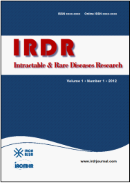Drug Discov Ther. 2015;9(6):397-403. (DOI: 10.5582/ddt.2015.01065)
Preparation and characterization of lidocaine rice gel for oral application.
Okonogi S, Kaewpinta A, Yotsawimonwat S, Khongkhunthian S
The objective of the present study was to prepare buccal anesthetic gels using rice as gelling agent. Rice grains of four rice varieties, Jasmine (JM), Saohai (SH), Homnil (HN), and Doisket (DS) were chemically modified. Buccal rice gels, containing lidocaine hydrochloride as local anesthetic drug were formulated using the respective modified rice varieties. The gels were evaluated for outer appearance, pH, color, gel strength, foaming property, adhesion, in vitro drug release and in vivo efficacy. It was found that the developed rice gels possessed good texture. Rice varieties showed influence on gel strength, color, turbidity, adhesive property, release property, and anesthetic efficacy. JM gel showed the lowest turbidity with light transmission of 86.76 ± 1.18% whereas SH gel showed the highest gel strength of 208.78 ± 10.42 g/cm2. Lidocaine hydrochloride can cause a decrease in pH and adhesive property but an increase in turbidity of the gels. In vitro drug release profile within 60 min of lidocaine SH gel and lidocaine HN gel showed that lidocaine could be better released from SH gel. Evaluation of in vivo anesthetic efficacy in 100 normal volunteers indicates that both lidocaine rice gels have high efficacy but different levels. Lidocaine SH gel possesses faster onset of duration and longer duration of action than lidocaine HN gel.







